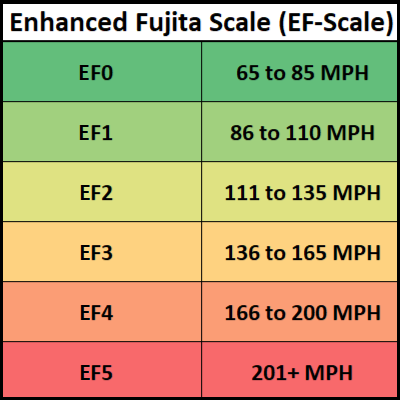 |
The sky before a severe storm in St. Paul, MN, taken 2018. |
My dad held me tightly as we sat in the beige recliner we brought with us from the old house. My family had just moved into our new house a few months prior, so the basement was mostly unfurnished, save for a few chairs and a TV. I watched as gusts of wind bent pine trees over like they had springs in their trunks. All I could do was tremble and cling to my dad. I felt the kind of fear that arises when you know there's nothing you can possibly do except hope that everything turns out alright. The winds died down almost as suddenly as they had started. Though the storm had finally stopped, I wasn't convinced that it wouldn't start all over again. That nearby brush with a tornado will forever be ingrained in my memory.
Although the whole event was psychologically terrifying, it fortunately wasn't physically damaging. Our house was unscathed. Beyond a few fallen trees and some displaced objects, our neighborhood looked virtually the same as it did before the storm. My mom later said that while we only experienced very strong winds, the people just a mile to the east of us had suffered severe property damage.
The evening of September 21, 2005, various cities in east central Minnesota were hit by 4 tornadoes (National Weather Service, 2005). One of these tornadoes touched ground in Andover. The tornado's wind speeds reached up to ~73 mph, and traveled across the ground for 1/3 of a mile before it broke up. According to the 2005 version of the Fujita (F) Scale, Andover had experienced an F0 tornado--the lowest possible on the scale. Atwater and Brooklyn Park were each hit by F0 tornadoes, but Coon Rapids and Blaine were struck by a much stronger, F2 tornado.
 |
| The (now outdated) Fujita (F) Scale. The level of severity ranges from 'weak' at F0 to 'catastrophic' at F5. |
Although these types of low-level tornadoes don't last long, they can cause significant amounts of property damage (Minnesota Public Radio, 2005). After this particular cluster of tornadoes, many peoples' garages had to be completely replaced. Around 30 peoples' homes were ruined to the point where they were unsuitable for living conditions. One man was killed by a falling tree branch. It is also common for widespread power outages to occur during a tornado--160,000 houses lost power in 2005.
A photo of a home in Andover, MN, severely damaged by rear flank downdraft winds caused by the tornado. |
References:
Minnesota Public Radio. (2005, September 22). MPR: Cleanup begins after violent storms roll through north metro. MPR. Retrieved March 29, 2022, from http://news.minnesota.publicradio.org/features/2005/09/22_ap_stormcleanup/
National Weather Service. (2005, September 21). Summary of September 21, 2005 severe weather in east central Minnesota. NOAA. Retrieved March 29, 2022, from https://www.weather.gov/mpx/20050921_MN_Severe_Weather
Farrah,
ReplyDeleteIt was interesting to learn about the Fujita scale. I also appreciated the statistics that you gave. It made the impacts of the 2005 tornado more digestible. As someone who grew up in MN I also appreciated that you named the cities that were impacted. It allowed me to create a visual map of the tornado.
This must have been a super scary experience for you :( You described what you saw in detail, but were so young when it happened. I'm so glad you and your family were untouched by the tornado, though! This is a crazy story to tell.
ReplyDelete